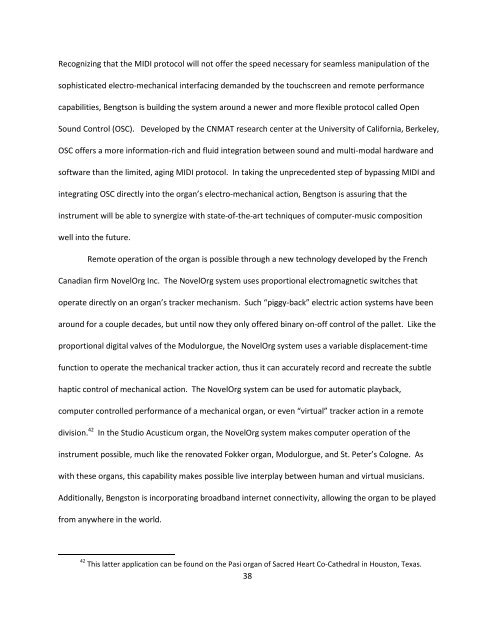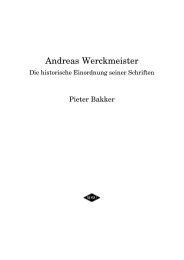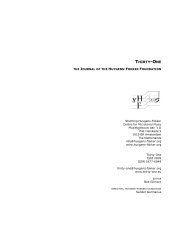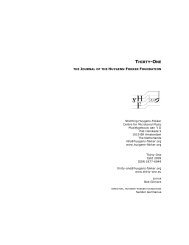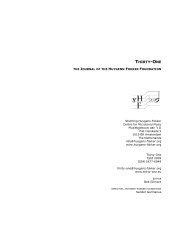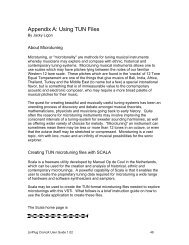Recent Organ Design Innovations and the 21st-century - Stichting ...
Recent Organ Design Innovations and the 21st-century - Stichting ...
Recent Organ Design Innovations and the 21st-century - Stichting ...
You also want an ePaper? Increase the reach of your titles
YUMPU automatically turns print PDFs into web optimized ePapers that Google loves.
Recognizing that <strong>the</strong> MIDI protocol will not offer <strong>the</strong> speed necessary for seamless manipulation of <strong>the</strong><br />
sophisticated electro-mechanical interfacing dem<strong>and</strong>ed by <strong>the</strong> touchscreen <strong>and</strong> remote performance<br />
capabilities, Bengtson is building <strong>the</strong> system around a newer <strong>and</strong> more flexible protocol called Open<br />
Sound Control (OSC). Developed by <strong>the</strong> CNMAT research center at <strong>the</strong> University of California, Berkeley,<br />
OSC offers a more information-rich <strong>and</strong> fluid integration between sound <strong>and</strong> multi-modal hardware <strong>and</strong><br />
software than <strong>the</strong> limited, aging MIDI protocol. In taking <strong>the</strong> unprecedented step of bypassing MIDI <strong>and</strong><br />
integrating OSC directly into <strong>the</strong> organ’s electro-mechanical action, Bengtson is assuring that <strong>the</strong><br />
instrument will be able to synergize with state-of-<strong>the</strong>-art techniques of computer-music composition<br />
well into <strong>the</strong> future.<br />
Remote operation of <strong>the</strong> organ is possible through a new technology developed by <strong>the</strong> French<br />
Canadian firm NovelOrg Inc. The NovelOrg system uses proportional electromagnetic switches that<br />
operate directly on an organ’s tracker mechanism. Such “piggy-back” electric action systems have been<br />
around for a couple decades, but until now <strong>the</strong>y only offered binary on-off control of <strong>the</strong> pallet. Like <strong>the</strong><br />
proportional digital valves of <strong>the</strong> Modulorgue, <strong>the</strong> NovelOrg system uses a variable displacement-time<br />
function to operate <strong>the</strong> mechanical tracker action, thus it can accurately record <strong>and</strong> recreate <strong>the</strong> subtle<br />
haptic control of mechanical action. The NovelOrg system can be used for automatic playback,<br />
computer controlled performance of a mechanical organ, or even “virtual” tracker action in a remote<br />
division. 42 In <strong>the</strong> Studio Acusticum organ, <strong>the</strong> NovelOrg system makes computer operation of <strong>the</strong><br />
instrument possible, much like <strong>the</strong> renovated Fokker organ, Modulorgue, <strong>and</strong> St. Peter’s Cologne. As<br />
with <strong>the</strong>se organs, this capability makes possible live interplay between human <strong>and</strong> virtual musicians.<br />
Additionally, Bengston is incorporating broadb<strong>and</strong> internet connectivity, allowing <strong>the</strong> organ to be played<br />
from anywhere in <strong>the</strong> world.<br />
42 This latter application can be found on <strong>the</strong> Pasi organ of Sacred Heart Co-Ca<strong>the</strong>dral in Houston, Texas.<br />
38


